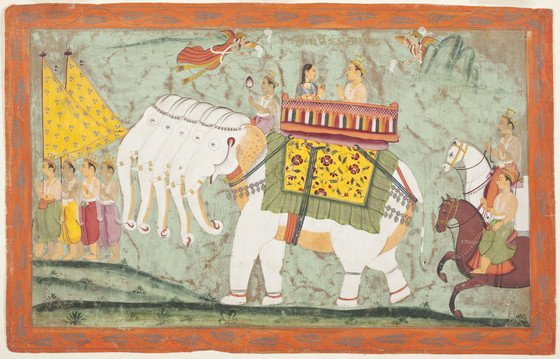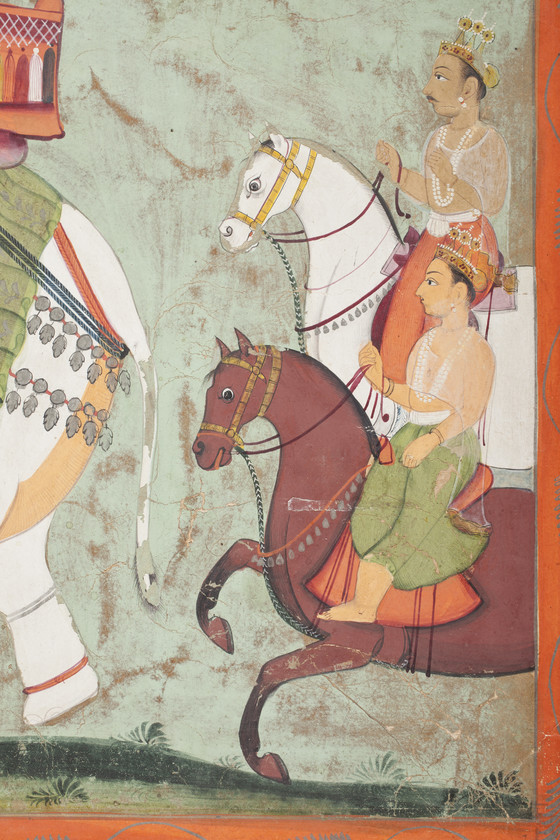Indra and Indrani Riding on Airavata, Folio from a Panchakalyanaka (Five Auspicious Events)



Please log in to add this item to your gallery.
View comments
No comments have been posted yet.
Add a comment
Please log in to add comments.
Please log in to add tags.
* Nearly 20,000 images of artworks the museum believes to be in the public domain are available to download on this site.
Other images may be protected by copyright and other intellectual property rights.
By using any of these images you agree to LACMA's Terms of Use.
Indra and Indrani Riding on Airavata, Folio from a Panchakalyanaka (Five Auspicious Events)
India, Rajasthan, Amber, circa 1740
Drawings; watercolors
Opaque watercolor, gold, and silver on paper
Image: 9 1/8 x 15 1/8 in. (23.18 x 38.42 cm); Sheet: 10 5/8 x 16 3/4 in. (26.99 x 42.55 cm)
Indian Art Special Purpose Fund (M.74.102.4)
Not currently on public view


